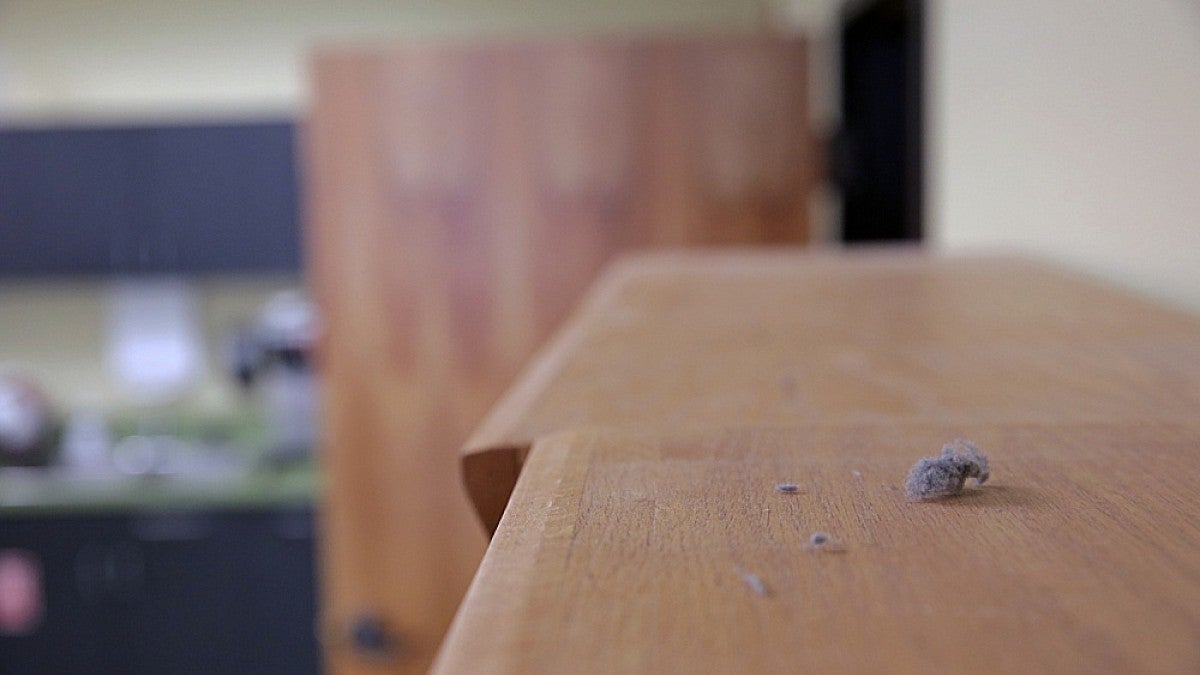In the dust of an aging building used for athletics and academics, UO researchers found a potential problem. Genetic analyses of the samples they gathered turned up antimicrobial chemicals and antibiotic resistance genes.
That both were in the dust doesn't necessarily mean one caused the other, but finding them together provides probable cause for a more research, says Erica M. Hartmann, who led the project while a postdoctoral fellow in the UO's Biology and the Built Environment Center and Institute of Ecology and Evolution.
One of the antimicrobials is triclosan, which is the most commonly used antibacterial ingredient in personal care products. It is among antimicrobials that the U.S. Food and Drug Administration ruled Sept. 2 must be removed from hand and bar soaps within the next year.
Triclosan has previously been linked with a gene that alters the ribosome — a complex of RNA and protein in cells that is responsible for RNA translation — in a way that makes bacteria resistant to antibiotics.
The new study is now online ahead of print in the journal Environmental Science & Technology. Hartmann joined the faculty at Northwestern University in Chicago this month.
"We might be tempted to think of the antimicrobial chemicals as being guilty by association," Hartmann said. "We don’t really know how the genes or the chemicals got there. They may have arrived by completely different routes and their being found together is a coincidence. However, we know that antimicrobial chemicals can cause an increase in antibiotic resistance in other situations, so I think these results provide a good reason to take a closer look at what’s going on in dust."
The FDA's ruling, she added, does not yet require that antimicrobials be removed from many other products, such as paints, baby toys, bedding and kitchen utensils. "We don’t have solid proof that putting antimicrobials in these products makes them any healthier, but we do know that triclosan in the environment can be harmful," she said.
The study is the first to document the co-existence of the chemicals and genes in indoor dust. In all, the paper reports six significant associations, with the levels of triclosan being comparable to those seen at some wastewater treatment plants.
Overall, Hartmann's team identified several antibiotic resistance genes, the most common of which conferred resistance to tetracycline antibiotics.
The chemicals and genes came from 44 samples from 31 varied-use spaces, using vacuum-fitted collectors. The building, built in 1921, has window ventilation but also experiences infiltration of outdoor air through cracks around doors and windows. DNA processing was done in the UO Genomics Core Facility with data-processing assistance from collaborators of Harvard University's School of Public Health.
People don't need to be particularly alarmed, Hartmann said. Antibiotic resistance genes in the environment, for example, are 10 to 100 times less abundant than in the human gut, she said. In infants, the genes occur naturally in the absence of antibiotics when microbes first colonize the gut.
"Antibiotic resistance is common in a lot of different places," she said. "Just because we find it in a certain building doesn’t mean that everyone who goes into that building is going to get a (drug-resistant) infection. The building is still as safe as it was before the study, but now we have a better idea of how many antibiotic resistance genes there are, and we have reason to believe that the amount of antibiotic resistance genes may be tied to the amount of antimicrobial chemicals."
Triclosan and antibiotic resistance have been found in other places and in the environment, Hartmann said, but finding them in indoor dust brings the threat closer to home. Average concentrations of triclosan found in the dust were much less than those found as the active ingredient in toothpaste, where it helps to reduce plaque and gum disease. The new FDA ban does not include toothpaste.
UO co-authors on the paper are Roxana Hickey, Clarisse M. Betancourt Roman, Jeff Kline, G.Z. Brown and Jessica L. Green. The Sloan Foundation, National Science Foundation and National Institutes of Health supported the research.
—By Jim Barlow, University Communications


